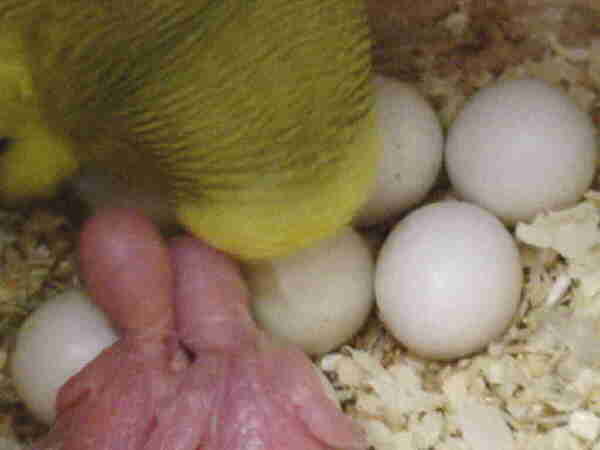|
Hatching
The first egg will hatch after 19 days, the others after 17. This means the first two chicks will hatch together, with the others coming at 2 day intervals after this. Some eggs will take longer than this, some less. It is simply a matter of watching the eggs that are due, and if the egg becomes discoloured, helping the chick to hatch. If the egg has not hatched after 18 days, and the egg is becoming blue-grey in colour, assistance should be given. Working at the larger end of the egg, where there is an air bubble, carefully push your fingernail under the egg surface and remove some of the shell. Expose the head of the chick, being careful that it does not drown in blood. This will be enough to allow the chick to hatch. Do not remove it from the shell, place the egg back in the nest with the chick's head out of the egg. If the chick is fully developed it will survive, but if there is still some yellow yolk visible on the stomach of the chick you have acted too soon and the chick will die. Always wait until the time seems excessive and there is obvious signs of bruising to the egg before acting.
Normally the chick will hatch on it's own, by making small cracks around the top of the egg and then pushing the top off. Once the first chicks in the nest have hatched it is important to make sure the other eggs are getting enough warmth. Allow the first three or four eggs to hatch, then farm out the last eggs or the first chicks to a foster pair to give the last eggs a better chance to hatch. Make sure that if you mix up the chicks or eggs from different nests you can identify them at a later stage. Eggs should be labelled, while chicks should be identifiable once their variety shows.

Emerging Chicks
Young birds will leave the nest at four to five weeks old. Any chicks that leave the nest before this should be returned to the box. Once the young are able to crack seed for themselves they should be removed from the parents and placed in the young bird cabinet. This allows them to be protected from the elements longer while keeping them away from parents that may savage them for staying in the breeding cabinet too long. The young bird cabinet should contain plenty of perches and be located near to human activity to allow the chicks to get used to people. Chicks should stay in the cabinet until they can withstand any changes in the elements, and they have developed the strength to fly properly. |